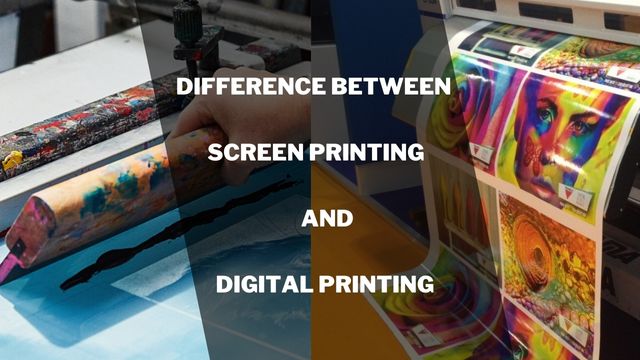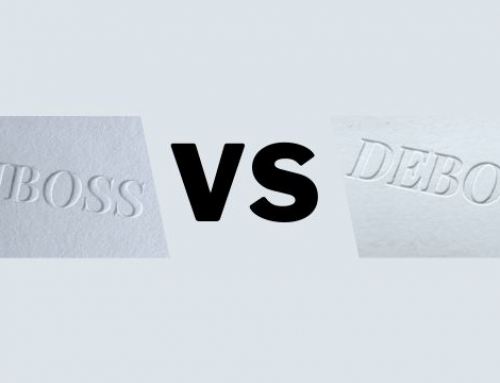Screen printing and digital printing are two trendy methods for transferring designs onto various surfaces. While both techniques have unique characteristics and advantages, they differ significantly in process, application, and output quality. This guide will explore the intricacies of screen printing and digital printing, exploring their respective techniques, processes, and applications. Understanding the distinctions between these two methods allows you to decide which approach best suits your printing needs.
What Is Screen Printing?
Screen printing (silk screening) is a traditional printing technique that involves transferring ink onto a substrate (such as paper, fabric, or plastic) through a mesh screen. The process begins with creating a stencil (or screen) of the desired design placed over the substrate. Ink is applied to the screen and forced through its open areas using a squeegee, transferring the design onto the substrate below.
Types of Screen Printing
Flatbed Screen Printing: In the flatbed printing method, the substrate remains stationary while the screen is moved over its surface, allowing for precise design placement.
Rotary Screen Printing: The substrate is fed continuously through a rotating cylindrical screen, enabling high-speed printing of repetitive patterns.
Screen Printing Process
Preparation of Screen: The screen is coated with a photosensitive emulsion and exposed to ultraviolet light through a film positive of the design, creating the stencil.
Ink Preparation: Ink is mixed to the desired color and consistency, ensuring optimal printing results.
Printing: The stencil is aligned with the substrate, and ink is applied to the screen’s surface. The squeegee is then used to force the ink through the open areas of the stencil onto the substrate.
Curing: The printed substrate is passed through a conveyor dryer or heat tunnel to cure the ink, ensuring durability and colorfastness.
Screen Printing Techniques
Spot Color Printing: Utilizes premixed colors to achieve precise color matching and vibrant results.
Four-Color Process Printing: Combines four primary colors (cyan, magenta, yellow, and black) to produce various colors appropriate for photographic and multicolored graphics.
What Is Digital Printing?
Digital printing is a modern technique for putting digital files directly onto a substrate utilizing inkjet or laser printing technology. Unlike screen printing, which necessitates the development of physical stencils, digital printing allows for the direct replication of digital designs with little setup time.
Types of Digital Printing
Inkjet Printing: This uses inkjet printers to spray microscopic droplets of ink onto the substrate, resulting in high-resolution prints with fine detail.
Laser Printing: Employs laser technology to fuse toner particles onto the substrate, offering fast printing speeds and sharp text and graphics.
Digital Printing Process
File Preparation: The digital file containing the design is prepared using graphic design software, ensuring proper sizing and color management.
Printing: The prepared file is sent directly to the digital printer, which applies ink or toner onto the substrate according to the specified design.
Finishing: Once printing is complete, the substrate may undergo additional finishing processes, such as cutting, laminating, or binding, depending on the intended application.
Digital Printing Techniques
Variable Data Printing: Allows customization of each printed piece by incorporating unique text or graphics based on database information.
Large Format Printing: Enables the printing of oversized designs onto substrates such as banners, posters, and signage, utilizing specialized large-format printers.
Screen Printing vs. Digital Printing: Which is Better
When selecting the most suitable printing method for your project, comparing screen printing and digital printing becomes crucial. Each technique offers advantages and limitations, making it essential to assess your specific requirements before deciding.
Advantages of Screen Printing
Durability: Screen printing is renowned for its durability, making it an excellent choice for items subjected to frequent handling or exposure to harsh conditions. The ink bonds firmly with the substrate, ensuring resistance against fading, scratching, and washing.
Color Vibrancy: With the ability to use specialty inks and spot colors, screen printing delivers vibrant and opaque prints. This makes it particularly effective for designs that demand bold and vivid colors to create a statement.
Cost-Effectiveness for Large Runs: Although screen printing may have higher initial setup costs, it becomes more cost-effective for large production runs due to lower per-unit costs. This makes it a budget-friendly option for bulk orders of identical designs.
Advantages of Digital Printing
Versatility: Digital printing can handle variable data and customized designs, making it perfect for on-demand printing and personalized products. It offers flexibility in printing different designs without creating separate screens.
High Resolution and Detail: Thanks to advancements in digital printing technology, it can reproduce intricate designs, gradients, and photographic images with exceptional clarity and detail. This makes it an excellent choice for projects requiring precise rendering.
Quick Turnaround Times: With minimal setup requirements and no screen preparation needed, digital printing offers swift turnaround times. It is well-suited for projects with tight deadlines or those requiring last-minute adjustments.
Considerations for Selection
- Print Quantity: Screen printing is more cost effective for large production runs of identical designs, while digital printing is better suited for short print runs and projects requiring customization.
- Design Complexity: Screen printing is ideal for simple designs with spot colors, whereas digital printing offers greater versatility for complex designs, gradients, and photographic images.
- Substrate Compatibility: Screen printing works well with various substrates, including textiles, plastics, and metals. Digital printing may have limitations depending on the substrate and surface texture.
- Budget Constraints: While screen printing may entail higher initial setup costs, digital printing can be more economical for smaller quantities or projects requiring customization.
Screen printing and digital printing depend on print quantity, design complexity, substrate type, and budget constraints. While screen printing excels in durability and color vibrancy for large production runs, digital printing offers flexibility and customization for smaller quantities and variable data applications. Ultimately, selecting the suitable printing method involves assessing your specific needs and priorities to achieve the desired outcome effectively and efficiently.
If you’re unsure which printing method suits your project, contact BJ’s Printing Emporium for expert advice and assistance. With years of experience and dedication to quality, we can help guide you toward the best printing services to meet your needs. Call us today to get started on your next printing project!







Leave A Comment